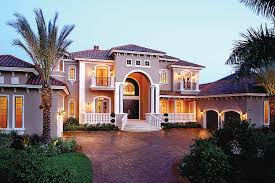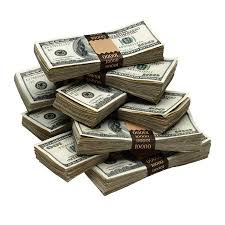 4 (four) is a number, numeral, and glyph. It is the natural number following 3 and preceding 5. Four is the only number in the English language for which the number of letters in its name is equal to the number itself. This is also true in several other languages, such as German, Afrikaans, Dutch, and Flemish, as "vier".[citation needed]
4 (four) is a number, numeral, and glyph. It is the natural number following 3 and preceding 5. Four is the only number in the English language for which the number of letters in its name is equal to the number itself. This is also true in several other languages, such as German, Afrikaans, Dutch, and Flemish, as "vier".[citation needed]In mathematics
Four is the smallest composite number, its proper divisors being 1 and 2. Four is also a highly composite number. The next highly composite number is 6.
Four is the second square number, the second centered triangular number.
4 is the smallest squared prime (p2) and the only even number in this form. It has an aliquot sum of 3 which is itself prime. The aliquot sequence of 4 has 4 members (4,3,1,0) and is accordingly the first member of the 3-aliquot tree.
Only one number has an aliquot sum of 4 and that is squared prime 9
The prime factorization of four is two times two.
Four is the smallest composite number that is equal to the sum of its prime factors. (As a consequence of this, it is the smallest Smith number). However, it is the largest (and only) composite number n for which is false.
is false.
It is also a Motzkin number.
In addition, . Continuing the pattern in Knuth's up-arrow notation,
. Continuing the pattern in Knuth's up-arrow notation,  , and so on, for any number of up arrows.
, and so on, for any number of up arrows.
A four-sided plane figure is a quadrilateral (quadrangle) or square, sometimes also called a tetragon. A circle divided by 4 makes right angles. Because of it, four (4) is the base number of plane (mathematics). Four cardinal directions, four seasons, duodecimal system, and vigesimal system are based on four.
A solid figure with four faces is a tetrahedron. The regular tetrahedron is the simplest Platonic solid. A tetrahedron, which can also be called a 3-simplex, has four triangular faces and four vertices. It is the only self-dual regular polyhedron.
Four-dimensional space has the largest number of dimensions used by more than three convex regular figures. There are infinitely many convex regular polygons (two-dimensional); five convex regular polyhedra (three-dimensional, the five Platonic Solids); six convex regular polychora (four-dimensional); and three regular convex polytopes occupying each higher-dimensional space.
The smallest non-cyclic group has four elements; it is the Klein four-group. Four is also the order of the smallest non-trivial groups that are not simple.
Four is the maximum number of dimensions of a real division algebra (the quaternions), by a theorem of Ferdinand Georg Frobenius.
The four-color theorem states that a planar graph (or, equivalently, a flat map of two-dimensional regions such as countries) can be colored using four colors, so that adjacent vertices (or regions) are always different colors.[1] Three colors are not, in general, sufficient to guarantee this. The largest planar complete graph has four vertices.
Lagrange's four-square theorem states that every positive integer can be written as the sum of at most four square numbers. Three are not always sufficient; 7 for instance cannot be written as the sum of three squares.
Four is the first positive non-Fibonacci number.
Each natural number divisible by 4 is a difference of squares of two natural numbers, i.e. 4x = y2 − z2.
Four is an all-Harshad number and a semi-meandric number.
Read more ... ( click here )

From Wikipedia, the free encyclopedia
Four is the smallest composite number, its proper divisors being 1 and 2. Four is also a highly composite number. The next highly composite number is 6.
Four is the second square number, the second centered triangular number.
4 is the smallest squared prime (p2) and the only even number in this form. It has an aliquot sum of 3 which is itself prime. The aliquot sequence of 4 has 4 members (4,3,1,0) and is accordingly the first member of the 3-aliquot tree.
Only one number has an aliquot sum of 4 and that is squared prime 9
The prime factorization of four is two times two.
Four is the smallest composite number that is equal to the sum of its prime factors. (As a consequence of this, it is the smallest Smith number). However, it is the largest (and only) composite number n for which
 is false.
is false.It is also a Motzkin number.
In addition,
 . Continuing the pattern in Knuth's up-arrow notation,
. Continuing the pattern in Knuth's up-arrow notation,  , and so on, for any number of up arrows.
, and so on, for any number of up arrows.A four-sided plane figure is a quadrilateral (quadrangle) or square, sometimes also called a tetragon. A circle divided by 4 makes right angles. Because of it, four (4) is the base number of plane (mathematics). Four cardinal directions, four seasons, duodecimal system, and vigesimal system are based on four.
A solid figure with four faces is a tetrahedron. The regular tetrahedron is the simplest Platonic solid. A tetrahedron, which can also be called a 3-simplex, has four triangular faces and four vertices. It is the only self-dual regular polyhedron.
Four-dimensional space has the largest number of dimensions used by more than three convex regular figures. There are infinitely many convex regular polygons (two-dimensional); five convex regular polyhedra (three-dimensional, the five Platonic Solids); six convex regular polychora (four-dimensional); and three regular convex polytopes occupying each higher-dimensional space.
The smallest non-cyclic group has four elements; it is the Klein four-group. Four is also the order of the smallest non-trivial groups that are not simple.
Four is the maximum number of dimensions of a real division algebra (the quaternions), by a theorem of Ferdinand Georg Frobenius.
The four-color theorem states that a planar graph (or, equivalently, a flat map of two-dimensional regions such as countries) can be colored using four colors, so that adjacent vertices (or regions) are always different colors.[1] Three colors are not, in general, sufficient to guarantee this. The largest planar complete graph has four vertices.
Lagrange's four-square theorem states that every positive integer can be written as the sum of at most four square numbers. Three are not always sufficient; 7 for instance cannot be written as the sum of three squares.
Four is the first positive non-Fibonacci number.
Each natural number divisible by 4 is a difference of squares of two natural numbers, i.e. 4x = y2 − z2.
Four is an all-Harshad number and a semi-meandric number.
Read more ... ( click here )

From Wikipedia, the free encyclopedia



